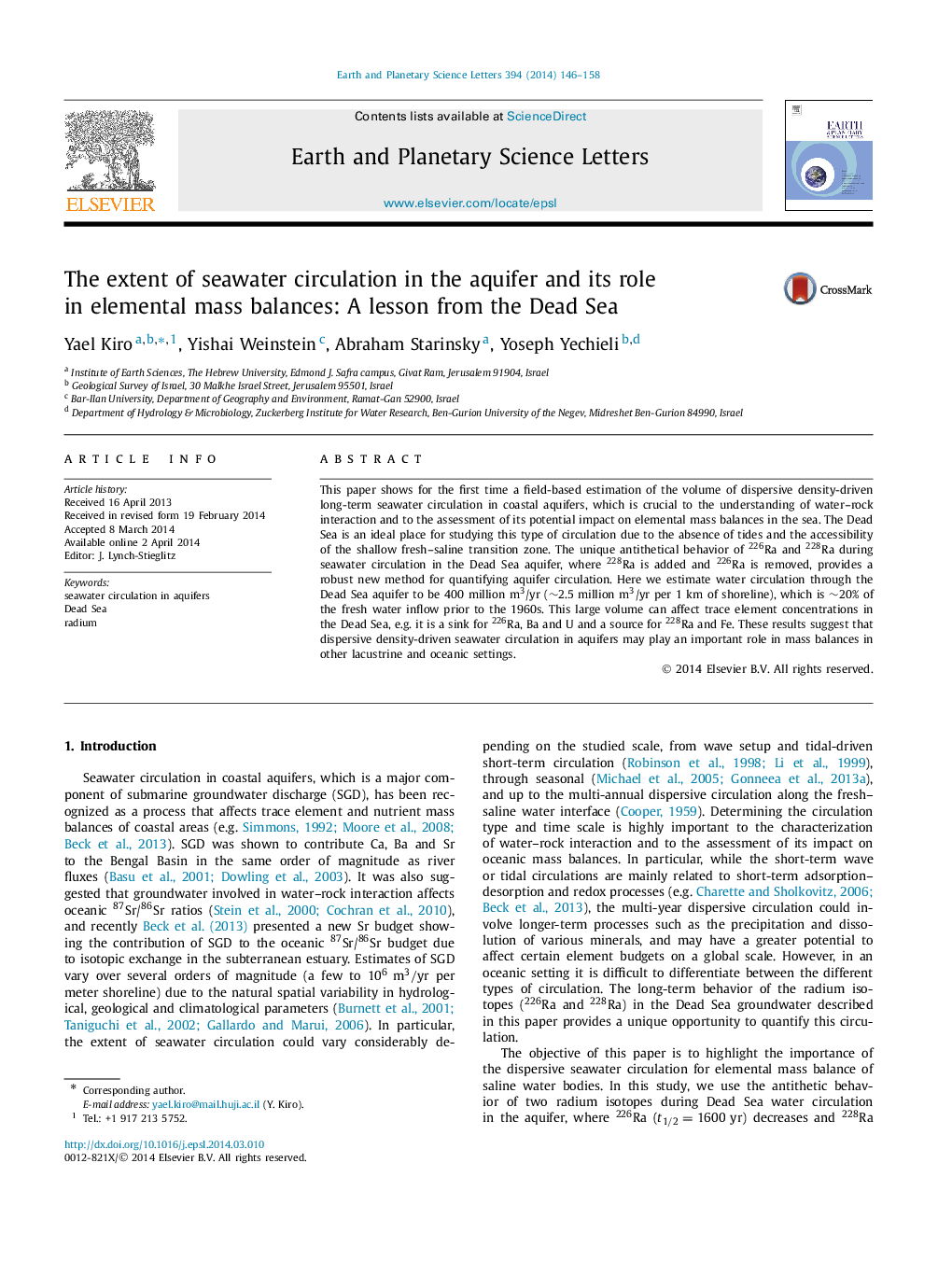| Article ID | Journal | Published Year | Pages | File Type |
|---|---|---|---|---|
| 6429402 | Earth and Planetary Science Letters | 2014 | 13 Pages |
â¢Long-term (years) dispersive seawater circulation in aquifers is estimated based on field data.â¢Aquifer circulation affects trace element content in the Dead Sea.â¢Recalculation of the Dead Sea radium budget, including circulation in the aquifer.â¢A radium isotope-based novel method to determine seawater circulation in aquifers.â¢Dispersive seawater circulation is probably the dominant mechanism of seawater circulation.
This paper shows for the first time a field-based estimation of the volume of dispersive density-driven long-term seawater circulation in coastal aquifers, which is crucial to the understanding of water-rock interaction and to the assessment of its potential impact on elemental mass balances in the sea. The Dead Sea is an ideal place for studying this type of circulation due to the absence of tides and the accessibility of the shallow fresh-saline transition zone. The unique antithetical behavior of 226Ra and 228Ra during seawater circulation in the Dead Sea aquifer, where 228Ra is added and 226Ra is removed, provides a robust new method for quantifying aquifer circulation. Here we estimate water circulation through the Dead Sea aquifer to be 400 million m3/yr (â¼2.5 million m3/yr per 1 km of shoreline), which is â¼20% of the fresh water inflow prior to the 1960s. This large volume can affect trace element concentrations in the Dead Sea, e.g. it is a sink for 226Ra, Ba and U and a source for 228Ra and Fe. These results suggest that dispersive density-driven seawater circulation in aquifers may play an important role in mass balances in other lacustrine and oceanic settings.
